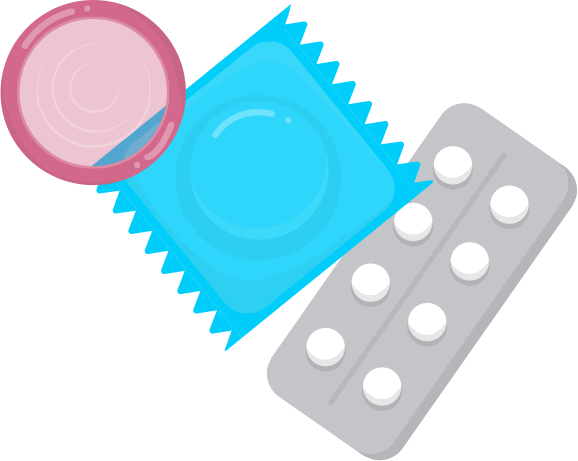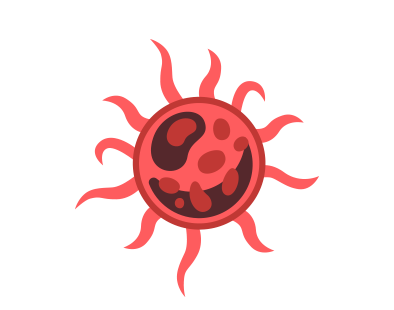

Sex. It’s a natural part of life – exciting, intimate, and, yes, sometimes a little confusing. But with pleasure can come responsibility, especially when it comes to sexual health.
Sexual health encompasses every aspect of our well-being—physical, emotional, and relational—and plays a key role in our overall quality of life. When we talk about sexual health, we’re really talking about a holistic approach to well-being that includes understanding our bodies, our boundaries, and how to protect ourselves and our partners.
A key part of this protection is knowing about sexually transmitted infections, or STIs. Understanding STIs—how they’re spread, their symptoms, and how to prevent them—is essential to maintaining not just physical health, but also the peace of mind that allows for truly enjoyable intimacy.
Whether you’re here to protect yourself, a partner, or simply to learn, this guide offers everything you need to know – from the basics of prevention to treatment, and the truth about symptoms (or lack of them). There’s no shame here, just facts, friendly advice, and a supportive space to help you take control of your health and feel confident in every choice you make.
STIs are infections primarily transmitted through sexual contact. They can be caused by bacteria, viruses, or parasites. While some STIs can be cured with antibiotics, others require ongoing management. Early detection and treatment are key to preventing complications.

Bacterial STIs
Chlamydia is a common bacterial infection that often shows no symptoms, making it hard to detect. When symptoms do appear, they may include pain during urination and unusual genital discharge.
Gonorrhea is a widespread bacterial STI that can infect the genitals, rectum, and throat. Symptoms may include a burning sensation when urinating and, in men, white, yellow, or green discharge from the penis; however, many people are asymptomatic.
Syphilis progresses through stages, initially causing painless sores, then leading to rashes and eventually affecting vital organs if untreated. It is spread through direct contact with syphilitic sores during sexual activity.

Viral STIs
HPV is the most common STI globally, with many strains, some of which can cause genital warts and others that can lead to cancers (cervical, throat).
HSV has two main types: HSV-1 (oral herpes) and HSV-2 (genital herpes). It causes painful blisters or sores around the mouth or genitals. It can be transmitted through direct contact with an infected person’s sores or body fluids.
Hepatitis B is a viral infection that affects the liver and can lead to chronic liver disease or liver cancer. Symptoms may include fatigue, abdominal pain, and jaundice.
HIV attacks the immune system, potentially leading to acquired immunodeficiency syndrome (AIDS) if untreated. Early HIV symptoms resemble the flu but can progress to more serious complications.
Want to learn more about HIV?

Parasitic STIs
Trichomoniasis is a common parasitic STI that often causes no symptoms but may lead to itching, burning, or unusual discharge in affected individuals.
Pubic lice are small insects that infest the pubic hair and cause itching. They’re visible to the naked eye and may leave blue spots or sores from bites.
Using condoms consistently and correctly is one of the most effective ways to reduce the risk of many sexually transmitted infections (STIs). Condoms act as a barrier, preventing the exchange of bodily fluids and limiting direct skin-to-skin contact that can spread infections. Here are the STIs that can be preventable by condom use:
Remember: Condoms + Regular Testing = Better Protection
While condoms are effective against many STIs, combining condom use with regular STI testing, open communication with partners, and vaccination where available (like for HPV and Hepatitis B) provides the best defense against infection. Using condoms correctly and consistently empowers you to make safer choices and enjoy a healthier sexual life.
Understanding your treatment options and knowing what to expect is essential for managing sexually transmitted infections (STIs) effectively. Here’s a breakdown of common treatments and management approaches, depending on the type of infection.

Bacterial STIs
Bacterial STIs like chlamydia, gonorrhea, and syphilis are usually curable with antibiotics. Most bacterial infections respond well to a single round of medication if caught early, although some cases may require follow-up treatment.

Viral STIs
Viral STIs such as herpes, human papillomavirus (HPV), and HIV cannot be cured but can be effectively managed.
HSV can be managed with antiviral medications that reduce the frequency and severity of outbreaks and lower the risk of transmission.
HPV often clears on its own in many cases, but treatment focuses on managing symptoms (like warts) or monitoring for complications (such as precancerous changes in cervical cells).
Antiretroviral therapy (ART) is essential for those with HIV, helping to suppress the virus and maintain a healthy immune system. With consistent ART, individuals can live long, healthy lives and reduce the risk of transmission.

Parasitic STIs
Parasitic STIs like trichomoniasis and pubic lice are typically treated with prescription medications, including antiparasitic drugs and topical solutions for lice infestations.
These treatments are highly effective, but reinfection can occur if partners are not treated simultaneously.
If you test positive for any STI, consulting a healthcare provider is essential. They can confirm your diagnosis and recommend a treatment or management plan tailored to your needs.
Regular follow-up visits may be necessary, especially for viral STIs, to monitor health status and ensure treatment effectiveness.
Get expert advice on reproductive health care and discover products and services available near you.

Mayo Clinic. (2022). Sexually transmitted infections (STIs). Retrieved from
https://www.mayoclinic.org
Centers for Disease Control and Prevention (CDC). (2022). Sexually transmitted diseases (STDs). Retrieved from
https://www.cdc.gov/std
World Health Organization (WHO). (2023). Sexually transmitted infections (STIs). Retrieved from
https://www.who.int/news-room/fact-sheets/detail/sexually-transmitted-infections-(stis)
Johns Hopkins Medicine. (2021). STI management and treatment. Retrieved from
https://www.hopkinsmedicine.org
National Institutes of Health (NIH). (2022). Condom effectiveness in reducing sexually transmitted infections. Retrieved from
https://www.nih.gov
Welcome to TRUST.ph! Our ai-Thea is powered by Artificial Intelligence (AI) and is designed to provide general information on reproductive health. Please carefully read the following disclaimer before interacting with ai-Thea:
For any concerns regarding data privacy or ai-Thea usage, please contact our Data Privacy Officer at (02) 5328-5020.
By interacting with this ai-Thea, you agree to the terms outlined in this disclaimer and our Privacy Policy.